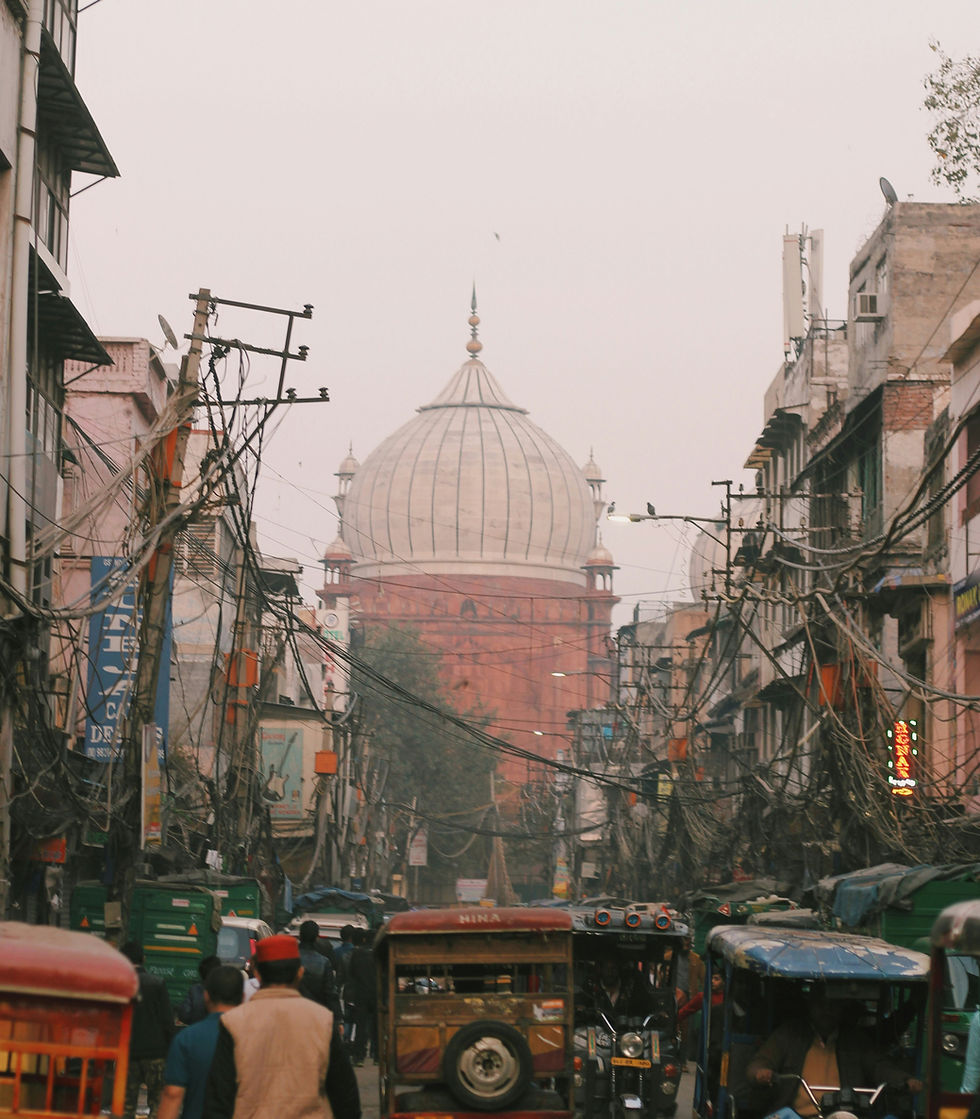The Importance of Chandni Chowk and Its Nearby Places
- Vansh Sharma
- Jul 7
- 3 min read

Delhi, the capital city of India, is known for its vibrant history, architectural marvels, and cultural diversity. Among its many iconic locales, Chandni Chowk stands out as a symbol of Delhi’s rich heritage and timeless charm. Situated in the heart of Old Delhi, Chandni Chowk is not just a market; it's an emotion, a living museum of Mughal-era traditions, and a hub of food, fashion, and faith.
A Glimpse into History
Built in the 17th century by Mughal Emperor Shah Jahan and designed by his daughter Jahanara, Chandni Chowk was once a grand boulevard with a canal running through its center, reflecting moonlight, hence the name "Chandni" (moonlight) "Chowk" (square). It was the principal street of Shahjahanabad and a center for trade and commerce.
Today, it remains one of the oldest and busiest markets in India, retaining its original layout and old-world charm. The narrow lanes, bustling with shoppers and vendors, offer an authentic glimpse into Delhi’s past and present.
Cultural and Commercial Significance
Chandni Chowk is a melting pot of cultures and religions. From Jama Masjid, one of the largest mosques in India, to Gauri Shankar Temple, Sis Ganj Sahib Gurudwara, and the Central Baptist Church, this area showcases religious harmony in its purest form.
The market itself is divided into several specialized lanes:
Dariba Kalan: Famous for silver jewelry.
Khari Baoli: Asia’s largest spice market.
Kinari Bazaar: A go-to for wedding decorations and ethnic trims.
Nai Sarak: Popular for books and stationery.
These bustling markets serve not only the locals but also attract tourists, designers, chefs, and traders from across the world.
Heaven for Food Lovers
One cannot talk about Chandni Chowk without mentioning its iconic food. From the crispy jalebis at Old Famous Jalebi Wala to the legendary parathas at Paranthe Wali Gali, and mughlai delicacies at Karim’s, this place is a paradise for street food lovers.
The culinary legacy of Chandni Chowk is unmatched, offering dishes that are generations old. Whether it’s sweet, spicy, or savory, every bite here tells a story.
Architectural Heritage and Nearby Attractions
Surrounding Chandni Chowk are monuments that define the historical and political landscape of India.
1. Red Fort (Lal Qila)
Just a stone’s throw away, the Red Fort is a UNESCO World Heritage Site and a symbol of India's independence. Built in 1648, this majestic fort is where the Prime Minister hoists the national flag on Independence Day.
2. Jama Masjid
Commissioned by Shah Jahan, the mosque stands as a marvel of Mughal architecture. With its expansive courtyard and towering minarets, it offers panoramic views of Old Delhi.
3. Raj Ghat
A short drive away, Raj Ghat is the memorial of Mahatma Gandhi, set in serene gardens along the Yamuna River. It offers a moment of quiet reflection amid the chaos of the city.
4. Fatehpuri Masjid and Town Hall
At the opposite end of Chandni Chowk, Fatehpuri Masjid marks the western boundary, while the Town Hall reflects colonial architecture, once serving as the seat of the British Municipal Corporation.
A Living Legacy
Chandni Chowk is not merely a destination; it’s an experience that transcends time. Despite modernization, its essence remains untouched. Restoration projects in recent years have enhanced its infrastructure while preserving its historical character, making it more accessible and tourist-friendly.



please suggest me some places in delhi where i can visit with my family